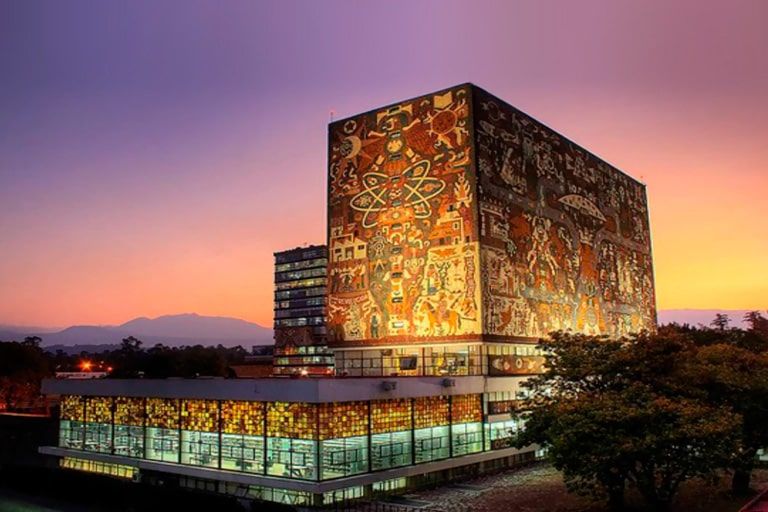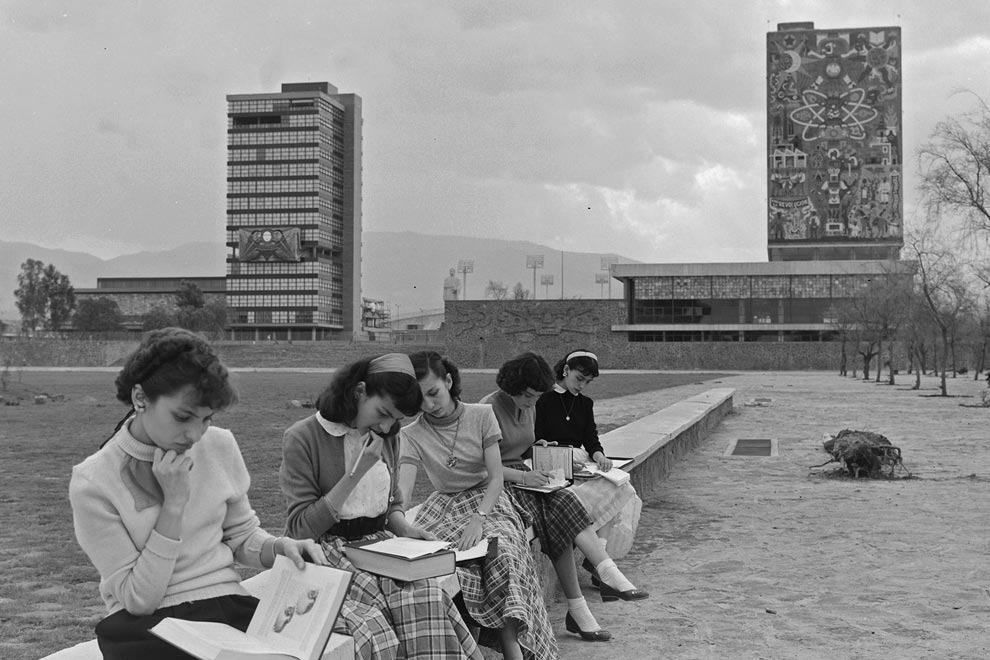María Stella Flores Barroeta, architect who gave unity of style to Ciudad Universitaria
She showed care, dedication, and passion in her plastic integration together with more than 50 architects. The vocation towards monumentality with quality in each of its buildings preserves Ciudad Universitaria in magnificent conditions 70 years after its construction.

The quality and care of each building were worked on by more than 50 architects in the middle of the 20th century. There were teams of three in each of the schools to be built. Therefore, the infrastructure has, in a certain way, a common language, a unity of style, which can be endorsed in the building currently occupied by the faculties of Philosophy, Law, and Economics, which is one. This was done by the directors of the overall project, Mario Pani and Enrique del Moral, but also by a woman architect, of whom very little has been studied: María Stella Flores Barroeta, who was in charge of the Project Workshop and of arranging all these buildings.
All this, so that the buildings would have this continuity, correspondence, and homogeneity, was achieved by the directors of the project as a whole and the architect Flores Barroeta, who did an extraordinary job that can be seen in the result of the buildings. The Ciudad Universitaria was so well cared for and constructed that the architects and the architect who designed and calculated the buildings did it with great care, dedication, and passion, so that the Ciudad Universitaria is very well maintained, with solid and well-planned buildings, even when teaching has been modified it continues to function, and it continues without any problems whatsoever. The care is taken in its plastic integration, the vocation towards monumentality, with care and quality in each of its buildings, preserves it in magnificent condition at 70 years old.

The architect of Ciudad Universitaria
María Stella Flores Barroeta obtained her degree in architecture from the UNAM in 1948, four years before the delivery of Ciudad Universitaria began. Her thesis entitled: "A clinic of the IMSS" has the written support of 38 pages; due to her professional capacity, months later she was the head of the Workshop of the Project of the University City Complex. She is the only one who officially appears in the credits of this collective work. She became the sixth woman to obtain a bachelor's degree at the then National School of Architecture, today a faculty, and the seventh at the national level.
In the year of the Dedication Ceremony of Ciudad Universitaria, in 1952, which marked the inauguration and delivery of the campus, the school population was 28,000 students; at that time only 17 percent of the new enrollment were women. According to information from the School of Architecture, as a teacher she was the second synodal in a professional exam; she also participated in the project and construction of the Administration and Post Office building of the Presidente Alemán Urban Complex. At the National Medical Center, she collaborated in the overall project and designed the plan for the Housing Building and the School of Nurses.
The monumentality of Ciudad Universitaria sometimes seems unnoticed because those who are close to it; however, we do not realize it because we see it in many places; it is a similar situation to Teotihuacan or the Zócalo; however for the rest of the world it is not like that. In the '60s a French publication dedicated an editorial space to the campus, where it anticipated that due to its quality, the Ciudad Universitaria would make Mexico the cultural leader of Latin America, which means that it was made for a great future: which is what we wish for the University.
Source: UNAM




